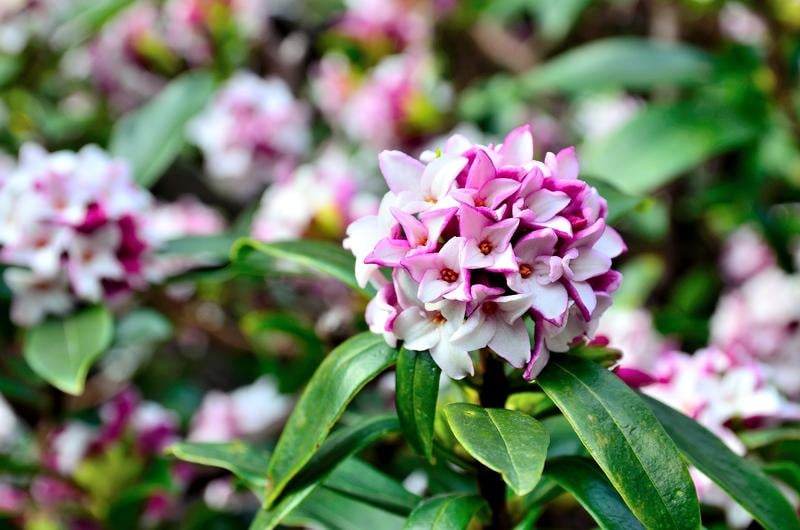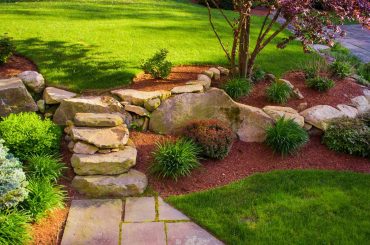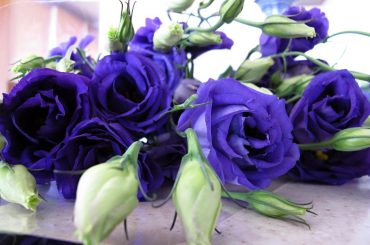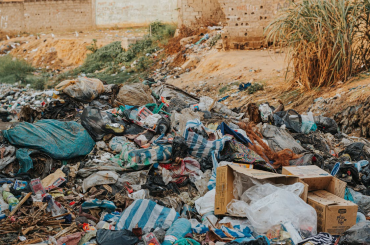Table of Contents
Daphnes are a genus of evergreen and deciduous species of shrubs of the Thymelaeaceae family. These shrubs are native to Asia, Europe and North Africa. A Daphne plant is known for its pretty-looking and fragrant flowers as well as its bright berries.
There are more than 80 species of Daphnes, and each variety has a different flowering season, and although they are often regarded as evergreen, not all the species retain their leaves throughout the year.
It is common knowledge that Daphnes can be quite hard to grow as their requirements are a bit tricky. The soil, for instance, has to have a balanced amount of water that is well-drained but also moist. It is a difficult plant overall, but that being said, with proper care, you can expect favourable results.
Let’s discuss how to grow and take care of it!
Identifying a Daphne Plant
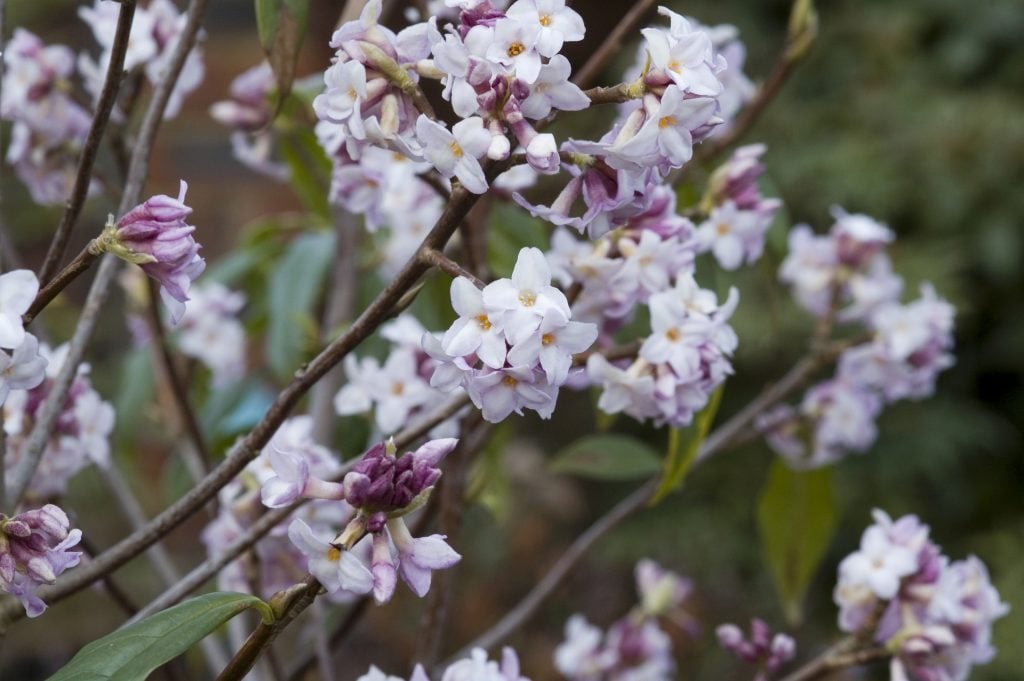
Daphne plants have strong and straight main stems from where multiple sub-stems branch out. The leaves on these sub-stems are terminal as they grow clustered together at the ends of the stems. The foliage is dense, with undivided leaves arranged alternately.
Flowers on these shrubs generally appear in late winter or very early spring. The flower grows either in clusters or as individual blossoms. The clustered flowers are also terminal as they grow on the ends of the stems. Individual flowers lack proper petals and are instead formed by petal-like sepals. The maximum height that daphnes grow to is between 1-5 feet, but the heights of dwarf varieties can sometimes be lesser than 1 foot.
How to Grow Daphne Plants
Daphnes can be easily grown from grafts of another healthy shrub if the perfect growing conditions are met. While it is also possible to grow Daphnes from seeds, the success rate is too low for it to be considered at all. That is why most gardeners prefer to use propagated graftings or from pre-grown saplings with a well-formed root mass.
1. Planting Daphne Plants
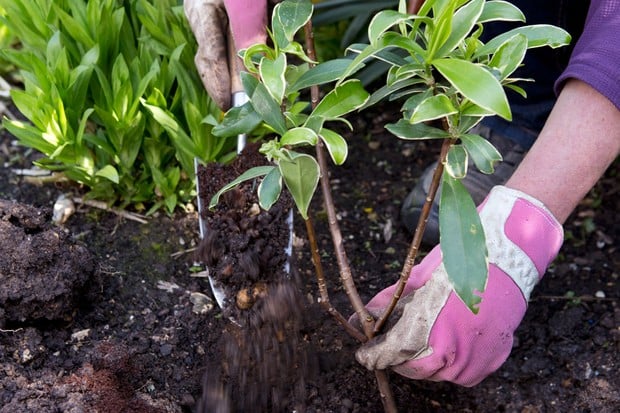
These plants like to grow in soil that retains moisture, so you must make the soil ready before planting the daphne grafts. Dig the soil in with lots of organic matter, such as garden compost. This can be either store-bought or homemade, depending on your convenience. The purpose of the compost is to hold the moisture in as a daphne plant will never grow well if the soil surrounding dries out. Depending on the soil that you have at hand, you have to add in more amounts or less amount of garden compost. For instance, sandy soils need a larger quantity of organic compost as this type of soil can easily be drained off as a result of its loose particles. Now, take the grafted plant and bury it in the soil. Make sure that the graft union is at least 5 cm below the soil. This will help the plants to establish roots faster.
While it is true that Daphnes grow better in garden soils rather than containers or pots, there are still some species, such as D. arbuscula and D. petraea, that can be grown indoors in pots. The concerned pot must be deep and filled with peat-free multipurpose compost and coarse sand. If you are going to use a daphne sapling instead of a graft, then the process is a bit different. You will have to prepare the soil as usual, but in this case, dig a hole so that the root mass of the sapling can be well inside the soil. Then soak the hole with water. Once the water is more logged like a puddle, place the place into the hole and cover it up with soil and your preferred growing medium.
One thing that you need to keep in mind while planting Daphne is that the sap of the plant is pretty toxic and can cause itches or irritation on your skin. So best wear some garden gloves while planting.
2. Time and Location to Plant Daphne
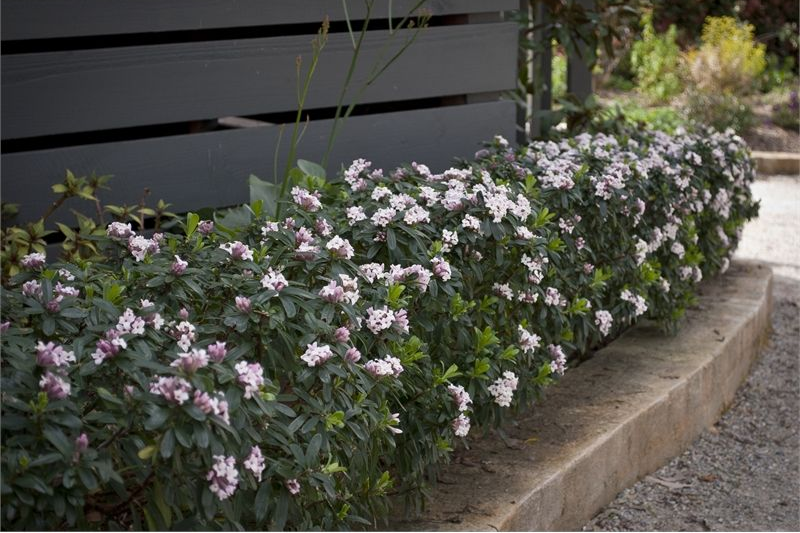
A Daphne plant grows best when planted in early spring. This gives them the perfect weather conditions to grow and establish their roots well in the soil. Also, since Daphnes like to grow in well-draining soil that is also moisture retentive, most of the time, they are planted in garden soils rather than inside pots which lose moisture fast. No matter which area you choose to grow the Daphne plants, the soil there must not be muddy or waterlogged, but it should be moist enough to keep the roots cool. The pH of the soil should be between neutral to moderately alkaline. And as these plants lose their vitality very quickly if left out in the sun for too long, the planting site should be partially shaded. You can also erect artificial shades for this purpose. However, some dwarf species, such as arbuscula and cneorum can grow well in full sun as well.
If you are working with heavy soil that tends to get waterlogged, then make sure to plant the grafts in a raised bed after digging in lots of organic matter, such as rotten manure.
How to Care for Daphne Plants?
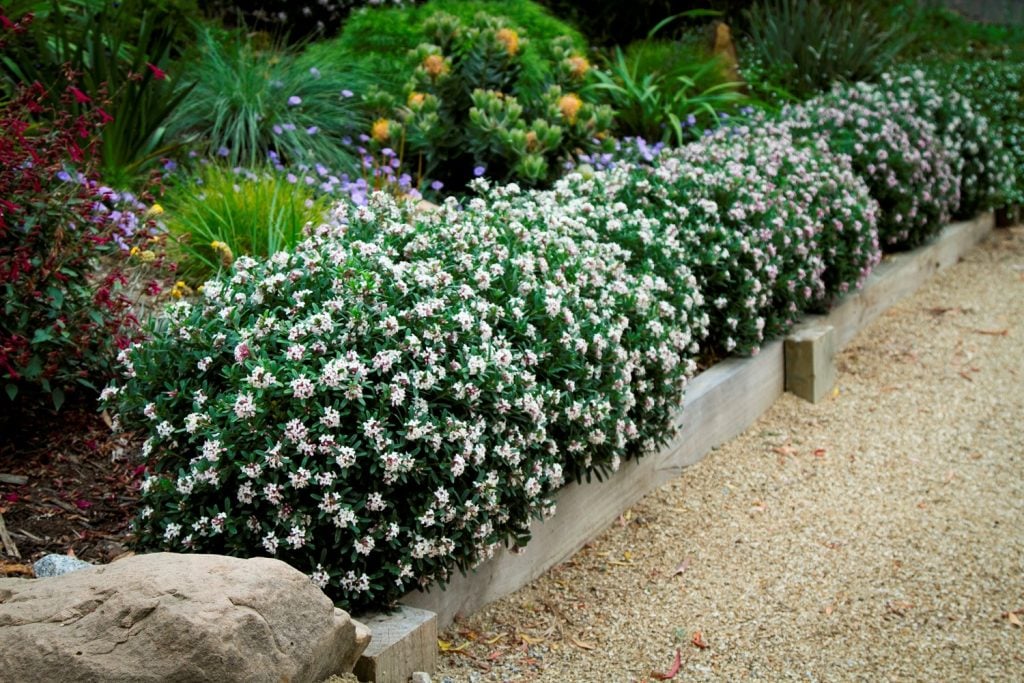
Planting a Daphne sapling or grafting is much easier compared to the effort required for caring. Many gardeners will say that Daphne plants are harder to grow than many other flowering plants. That is true to some extent, but with proper care and maintenance, you can get your plant to bloom for sure.
Follow the given steps to take good care of your plant.
1. Regular Watering to Daphne Plants
Plants need water to survive. But the requirements of every plant are different. If your Daphne plants are inside a pot, then they will need regular watering regardless of the weather because the soil in the pot loses moisture faster. Just make sure the pot has enough drainage holes so that water is not logging inside, making the roots wet. For the outdoor plants which are in the garden soil, regular watering for the first year after planting is necessary. After the roots have set deep into the soil, watering can be done only when the weather gets dry and hot. In areas with a generally hot climate, regular watering, even after the first year, must be done.
2. Feeding & Mulching Required for Overall Daphne Growth
Dapnes are slow-growers and root well into the soil. They do not need much feeding. In most cases, adding nutritional organic mulches is more than enough to meet the nutritional requirements of the shrubs. Still, what you can do is the minimum amount of fertilising every spring and remove the top layer of the soil without damaging the main stem. Removing about 5-6 cm of soil will be enough. Fill the empty area with fresh compost.
As for mulching, it is an important step that should be done right after the sapling/graft has been planted. Take a generous amount of mulch made of organic material, such as garden compost, and spread it over the soil. But do leave the immediate area around the base of the stem free of mulch so that the roots do not rot. Mulching helps in preventing pest/weed infestation and also holding in moisture that helps in the vigorous growth of the plant. After the initial mulching has been done, you can repeat the process every spring by covering the soil with carbon-rich materials.
3. Effects of Overwintering on Daphne Plant
In some species, there is a loss of foliage when winter arrives, but this is not permanent damage as the leaves grow up with spring. Daphnes tend to lose leaves when left out in the cold, and even though these plants are sturdy, they still need to be protected. Daphne plants can be overwintered by being kept in a warm and sheltered spot. This can be easily done with dwarf varieties grown in pots, as the pots can be moved around. But for garden plans, you can erect artificial shades over and around them to protect them from the cold.
4. Pruning Techniques for Daphne Plant
Daphnes are slow-growers and do not need to be pruned as such. Pruning and training a daphne plant may result in its die-back. This is a situation where the root of the plants remains alive, but no more new leaves grow. It can be difficult to reverse this state, and that is why you should buy only those varieties of daphnes whose maximum size will fit in the area you want to plant them in.
However, you do have to trim off the dead and damaged branches, if any but make sure to do it only during early spring.
Wrapping Up
All in all, Daphnes are small shrubs that look good in gardens when planted as borders or as foundation plants. However, you will not find a large number of people opting to plant this in their yard as much as other plants, and the reasons for that are two. Firstly, the plants are quite difficult to grow, and you may often have to overwinter them or change soils to make sure that the right conditions for their growth are being met. Secondly, it is toxic, and the sap of the plant as well as its berries, can cause harm to humans and pets.
The sap may irritate your skin, but the true danger lies when the leaves or fruits are ingested by mouth. This may cause ulceration inside the mouth, oesophagus and stomach. This is not nearly enough to kill someone, but it will cause great suffering to unsuspecting children or pets who get attracted by the bright red berried and choose to eat them.
Once the roots of the daphne plants establish well in the soil, they are relatively easier to care for, and only a little annual mulching can take care of the temperature and moisture needs of the plants. You still have to watch out for the toxicity, though.
Frequently Asked Questions (FAQs)
Why Isn’t My Daphne Seed Growing Well?
It is harder to grow daphne plants from seeds than it is from the other available methods, so do consider getting a plant grafting or a sapling for planting purposes.
Why Are the Leaves of My Daphne plant turning yellow?
Overwatering or underwatering can be a reason behind the leaves of your Daphne plant turning yellow. Check if the soil is too soggy or dry. Maintaining moist but not wet soil is the key to healthy daphne shrubs.
How Big of a Pot Should I Get to Plant a Dwarf Variety of Daphne?
Choose a large and tall pot. It should be at least 40 cm deep, and the width should be more than the root mass of your plant. The pot should have plenty of drainage holes, and if you want the soil to retain moisture, then go for a terracotta pot.
How Long Does a Daphne plant live?
Ideally, daphne plants should live between 10 to 12 years with ease, but as these plants are quite fussy about growing conditions, a slight change in soil type or temperature may cause the plant to die out earlier after only a few years.
Where Is the Best Spot to Plant Daphne?
These plants do need sunlight but not too much of it. This is why the best spot to plant them will be in a warm but shaded area where they will not be exposed to direct sunlight.
The Leaves of My Potted Daphne Plant are Turning Brown. What Should I Do?
Soil in pots tends to lose moisture faster than in garden soils. That is why you may sometimes notice the browning of leaves, along with leaves turning crispy. This is a sign of underwatering. Water your plant more but make sure that pot has enough drainage holes so that there is no water logging at the bottom. Usually, if you touch the top layer of the soil in the potted and see that it is too dry and cracked, the plant needs watering.

